#richthofen
Text


I'm too lazy to finish this..
Серьёзно, я уже заколебалась с этим 😰

Лол
#cod zombies#cod#cod z#art#fanart#edward richtofen#ultimis richtofen#Richthofen#call of duty#call of duty zombies#cod art
105 notes
·
View notes
Text
Historical proof that Manfred von Richthofen was thicc
So uh I feel like sharing this to the emptiness of the internet but a lot of people described MvR as “chubby” so ill just list those accounts here.
First of all, he himself said he is “as big as a barrel” after gaining some weight in the trenches.
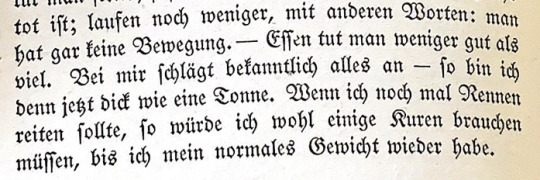
Then apparently Wilhelm II called him chubby when they first met “Sie sehen so dick und munter aus” (You look so chubby and happy). Essentially he called him a heckin’ wholesome chonker. [Edit: Yes, in the text he is talking about a meeting with Ludendorff, however he compares his meeting with Ludendorff with his meeting with Wilhelm II.]

Third is that apparently a family friend saw this picture and said “Das ist aber ein Moppelchen” (Moppelchen ist kind of a cutesy word for a chubby person) And my source is “trust me bro” because someone I trust a lot told me lmao.
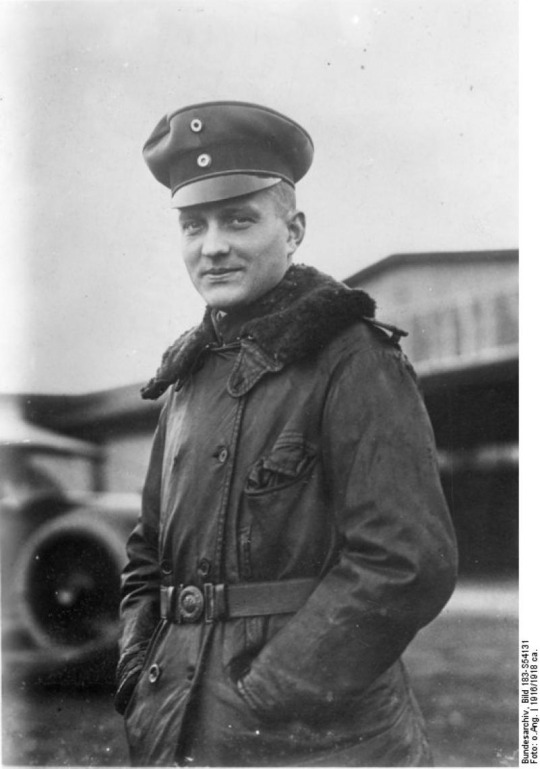
#manfred von richthofen#ww1#red baron#history#historyfacts#historical shitposting#big chungus#extra thicc#i dont know how to use tags on tumblr lmao#i want to kms#things no one asked for#richthofen#wilhelm ii#kaiser wilhelm ii
79 notes
·
View notes
Video
The Tactical Air Force Squadron 71 "Richthofen" provides the alert rota, the so-called Quick Reaction Alert (QRAQuick Reaction Alert), at the Wittmund location with the Eurofighter weapon system.
This readiness serves both as a contribution to integrated NATO air defense and to security in German airspace as a continuous mission of the Air Force in peacetime. The squadron occasionally provides forces to secure NATO airspace at locations outside Germany in conjunction with the Luftwaffe's other Eurofighter units.
3 notes
·
View notes
Text

One of The Red Baron's triplanes on display, 1935
#random#manfred von richthofen#the red baron#ww1#wwi#world war i#world war 1#first world war#flying circus#imperial germany
452 notes
·
View notes
Text
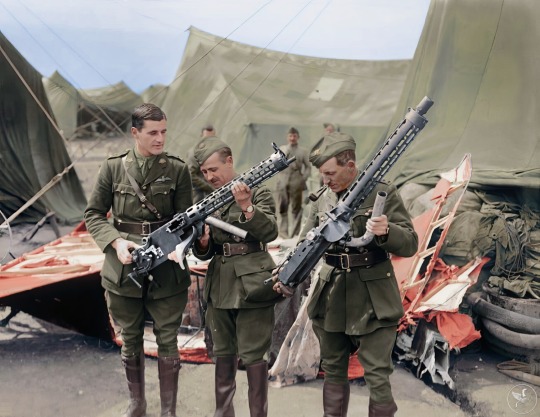
The Red Baron, WWI. Soldiers examine what remains of Manfred von Richthofen's aircraft after he was shot down, and killed over Vaux-sur-Somme, France, just days before his 26th birthday, but by then already an aviation legend.
➤➤ HIGHER RESOLUTION IMAGE: https://dronescapes.video/RedBaron
#red baron#Von Richthofen#youtube#aircraft#airplane#aviation#dronescapes#military#documentary#aviation history#ww1 history#ww1#hp ww1 era#french army#world war one#world war 1#first world war#aviation photography#fokker#military history#history#world history
184 notes
·
View notes
Text





1 am. it's officially my birthday! My gift to you is this doodle-dump lol
#martyrs of the sky#ww1 aviation#ww1#artists on tumblr#art tag ✨️#manfred von richthofen#elias von hafke#sebastian festner#karl allmenröder#wing commander shelby#major Enfield#captain bancroft
183 notes
·
View notes
Text





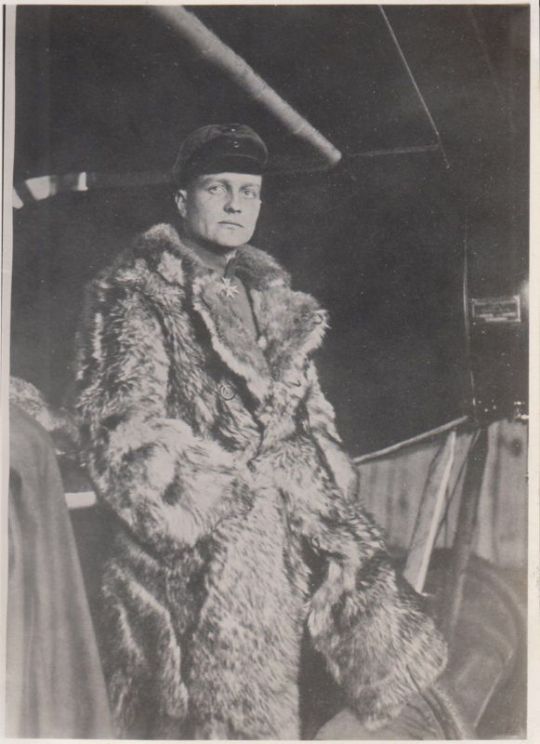

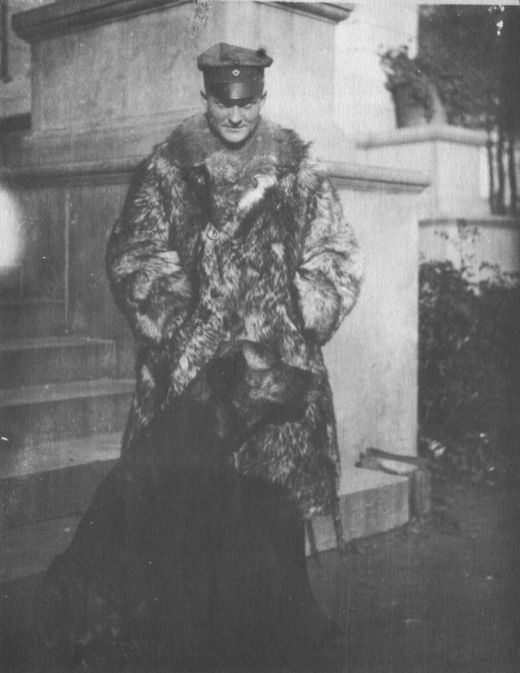
MvR (the Red Baron) in his ridiculous coat
#wwi#manfred von richthofen#mvr#read more about him today#feels bad man#anyway. a silly post for y'all#the red baron
155 notes
·
View notes
Text

1918 04 21 Feeding on the legend - Russell Smith
Manfred von Richthofen, the highest scoring ace of the First World War, was brought down on April 21, 1918, most likely by Australian gunners. After the crash, MvR's body was removed and his famous all-red triplane, number 425/17, was immediately set upon by souvenir hunters. Many of those souvenirs still exist today. According to witnesses that morning, MvR was alive when he came down. His landing could actually be described as something between a very rough landing and a crash. Witnesses describe seeing Richthofen putting the aircraft into a sideslip as if to land but then bringing it down very hard at the last moment. It bounced back into the air and climbed a few feet before finally stalling and crashing. The undercarriage was then ripped off and the propeller and port side wings were smashed. According to Ernest Tycross, one of the first people on the scene, Richthofen was alive when he reached the aircraft and muttered something to the effect of "Alles kaput" before breathing his last breath. After the war,1st Air mechanic Boxall-Chapman later described what he saw: "The propeller was smashed. So was the three right-hand planes and undercarriage but the three left-hand planes were intact." (sic - Boxall-Chapman was describing the scene as he approached the triplane from the front. Therefore, the smashed right-hand planes that he referred to were actually the port side wings.)
76 notes
·
View notes
Text
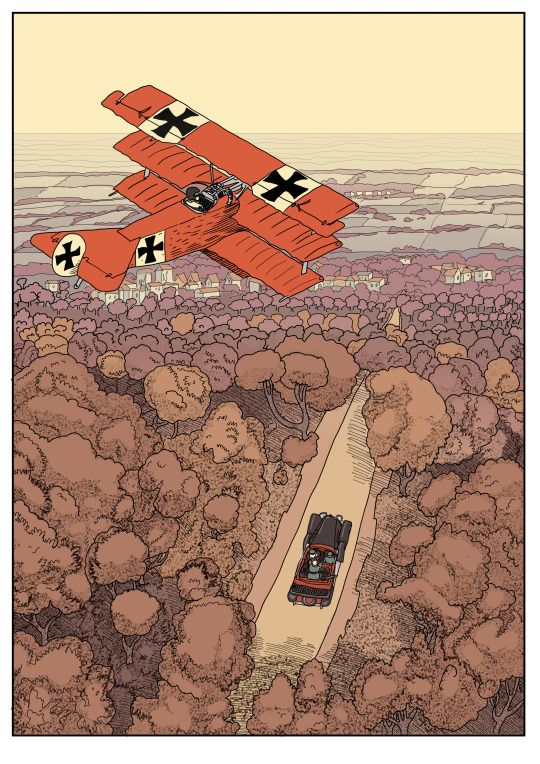
The Red Baron's cameo in Ottoway Volume 2. I might repost this on his birth and death days. Landscapes are my weakness, and bird's eye shots too. Thank George Barbier for the Autumn colour scheme.
Major Isenstein's red 1915 Chevrolet is on the road below.
@tristandelarkadien for landscape art exchange!
#manfred von richthofen#the red baron#cameo#ottoway#ww1 fiction#autumn#red plane#george barbier#artists on tumblr#edwardian#historical fiction#1915 chevrolet#1916#1917#wwi#first world war#the great war#art exchange#landscape#bird's eye view#nature#flanders#belgium
54 notes
·
View notes
Text

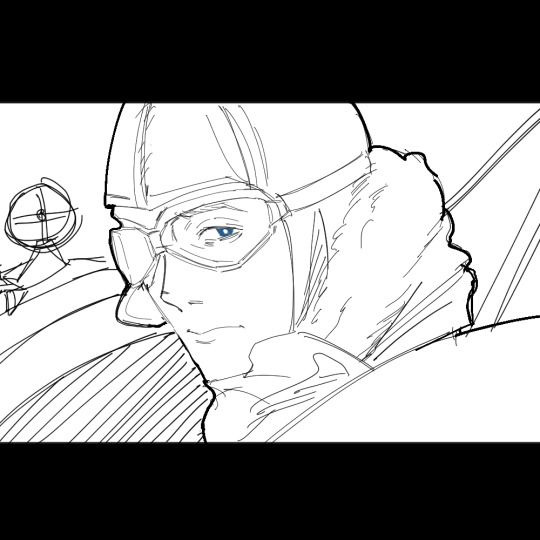


Hai again and bye
40 notes
·
View notes
Photo
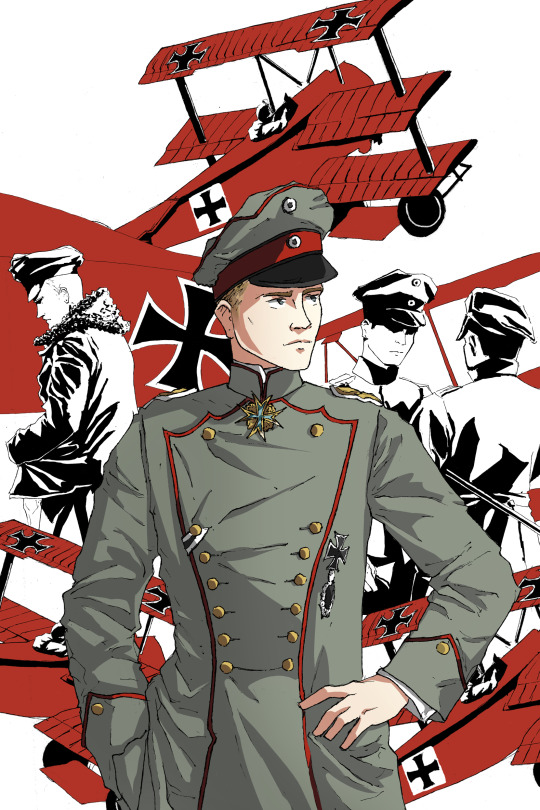
Today is Manfred von Richthofen’s birthday!
Known as the Red Baron and, fun fact, he was also born in Silesia!
non canon
184 notes
·
View notes
Text
Der rote Kampfflieger
publication history, propaganda value, and different versions
by @tintenspion, December 2022
Der rote Kampfflieger (The Red Air Fighter), published in 1917 and translated in 1918 is regarded to be the autobiography of Manfred von Richthofen. It was, and still is, the best selling german book about the first world war. In this post I will talk about how it was written and published, adress some personally selected instances of propaganda found in the book and explain the changes other publications of the book have made (focusing on the versions of 1920 and 1933).
This post is incredibly simplified and I can recommend reading the sources that I have listed, as they cover the topic in a lot more depth (but they're almost all in german)
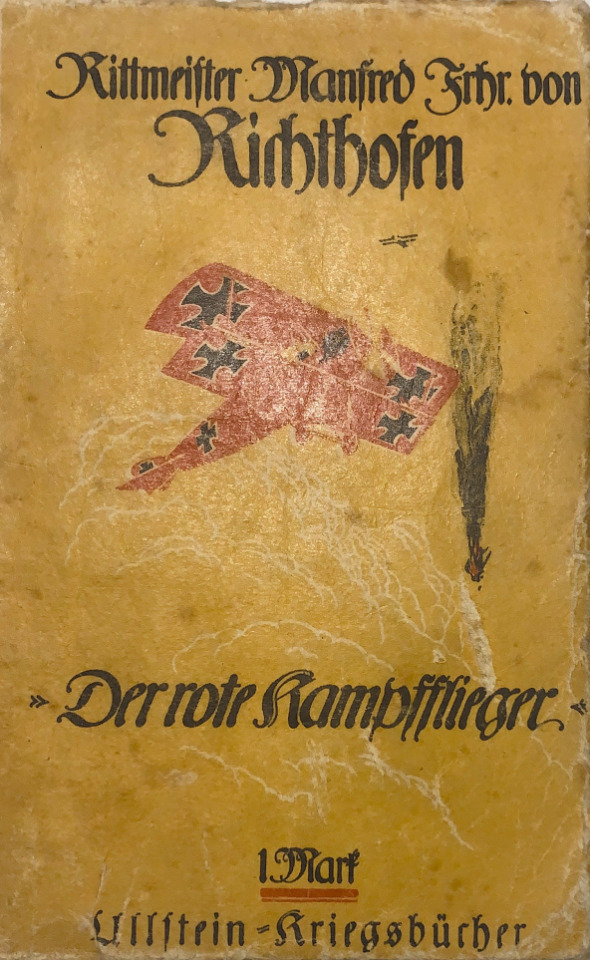
Der Rote Kampfflieger, 1917
The publication history
Manfred von Richthofen began writing his biography in May 1917. He had rejected requests writing a book multiple times before, because he did not feel that he had the talent nor the time to write. However, he was asked by the command of the aerial forces to write one and since that was essentially an order he accepted a request by the publisher Ullstein. (1)
Most historians agree that the book was essentially ghostwritten by Hauptmann Erich von Salzmann, who based it on acconts given in stenography by MvR. Salzmann was not credited for the book, however in the contract with Ullstein (the publisher) MvR gave Salzmann full authority over what parts of the stenography he adapts into the finished book, without having to get MvRs consent. (2)
Due to a lack of an original draft, is not reconstructable what parts of the book are actually written by him, which parts were ghostwritten and which parts were edited for propaganda purposes.
The intentions
Ullstein Kriegsbücher, the series Der rote Kampfflieger was published in was a series that focused on "firsthand accounts" of front soldiers, which explains why the book still uses an easy and "uneducated" language despite being mostly written by a ghostwriter. (3) This was done on purpose to make the reader identify more with MvR, since the divide between him and the average reader was already there due to him being an aristocrat. The books also focuses a lot on the fallibility of its main character, Manfred von Richthofen. He is portrayed as a little naive; someone who has no idea how war works and therefore makes a lot of mistakes. Examples include: Capturing french soldiers in a house and letting them escape on accident, giving wrong hand signs that almost get his division killed, failing his piloting exam and hitting his finger on a propeller. This is also done to make him more relatable to the average reader. (4)
The second part of the book focuses then on his life as a pilot and a squadron leader. The book goes out of its way to portray Richthofen as very humble. It is for example described how "in the flying corps we dont think about records. We only do our duty." [DRK p.154]. This is obviously an instance of propaganda, as records and victory numbers were contrary to this statement very important to the individual pilots. To portray MvR's "chivalry", they use a very interesting stylistic device. MvR calls himself a "Weidmann" (hunter) in comparison to his brother, whom he denounces as a "Schießer" (shooter). The word Weidmann, in contrast to Jäger, implies an unofficial hunters code on how to hunt in an honorable way. (5) In modern times, this comparison seems kind of grotesque, as MvR views his enemies as prey to be hunted. Downplaying the death enemy pilots and comparing the dogfights to a hunting situation is a reaccuring theme in iterature written by and about german ww1 pilots and is not exclusive to Manfred von Richthofen. (6)
The most infamous example of editation for propaganda regarding the "honorable fight" is probably the discription of MvR's 33rd victory: In the book it is described that MvR flew low over the downed plane to check if the pilots were dead, they are not and shoot back at him, however he decides to just fly away and not retaliate. (7) In his combat report for that victory however, he described that he did retaliate and killed one of the occupants. (It is notable that, according to Algernon Peter Warren, the pilot that survived, they actually didn't shoot back at Richthofens plane. Warren notes that there was ground fire coming from the trenches, and Richthofen probably mistook that for the downed plane firing at him). (8) Due to the fact that MvR seems to have been truthful in his combat report, it is to assume that the change in the book was most likely done by the censorship and not by Richthofen himself.
Richthofens view on his own book
MvR didn't really care about his autobiography. I believe this for multiple reasons: He says that he is not a good writer (9) and that he rejected writing an autobiography multiple times (as mentioned before). Also I believe if he really cared about how he was portrayed in his autobiography he wouldn’t have given Salzmann the rights to change things without him checking them first.
Ein Heldenleben, 1920
Published under the name "Ein Heldenleben", this was the version that had the worst sale numbers, however it is also the one that includes the most material. It was also edited by Salzmann. (10) It includes the original biography, shortened, and adds about 200 extra pages. Those extra pages include:
"Hinterlassene Papiere" (leftover papers): Excerpts from either letters to his family, his diary or rejected chapters of the autobiography (historically unclear)
A selection of letters to his mother
Excerpts from his brother Lothar
An account about Manfred as a child written by his mother
German, english and french articles about his last flight, death and funeral
Obituaries
Memories of Richthofen: Articles and anecdotes from other people who knew or met him
This book is regarded as the most detailed versions and is free from government censorship. Salzmann in this case only worked together with the Richthofen family, who probably decided what will go into the book and what won't. I need to point out however that some of the articles in "Memories of Richthofen" were already published in newspapers during the war, so those definetly had to pass a censorship comittee. I would still regard this version as the most trustworthy one out of the tree I am presenting.
Der Rote Kampfflieger, 1933
This version of the book is the one that had the most copies sold. It was edited by Hans Rudolf Berndorff. (11) Differences, aside from a couple of chapters having different titles and some chapters having been combined, include the removal of the first two chapters, and the inclusion of four extra chapters, with three of them having not been published beforehand. The book starts with a foreword by Hermann Göring an introduction written by MvR's brother Bolko. It also includes some chapters from his brother Lothar (the same as in the 1920 version, however a couple have been removed). The book also uses some of the letters that were published in Ein Heldenleben and add them to the autobiography (mostly) chronologically.
Especially notable is the often referenced chapter Gedanken im Unterstand (Thoughts in the shelter), where MvR talks about how his feelings towards the war have changed since his autobiography came out in may. The chapter was a letter to his mother, however it has been cut a lot, so we don't exactly know when and why it was written.
This book, in contrast to Ein Heldenleben, focuses more on the military aspects of MvR's life, as it is a part of Nazi propaganda.
Other publications of the book:
There was a version published in 1977, that included the full autobiography written by Friedrich Wilhelm Korff. In 1990 another version was published with a foreword written by Manfred Wörner, a former NATO secretary. I have not included an analysis of these two books, as they “only” evaluate the morals of the latter three. This is an entirely different topic, and a very complicated one, that deserves its own post.
The first english translation was published in 1918. I already made a post about a few translation mistakes, that you can see here.
Peter Kilduff also translated both the 1917 and the 1933 version.
Conclusion
In my opinion, the book is mostly interesting because you can see how the myth of Manfred von Richthofen was reshaped to fit different narratives and propaganda purposes over the course of 80 years. I wouldn't take it as a trustworthy source, especially regarding MvR's feelings towards the war, but I do believe it is a good guideline. Something to be weary of while reading biographies about Manfred von Richthofen or watching video essays about him is when people take the autobiography a little too much at face value and automatically assume that the propagada in it was edited by him personally and not by the editor.
Sources:
(1) CASTAN, Joachim: Der Rote Baron: Die ganze Geschichte des Manfred von Richthofen (2008) ISBN 9783608944617, p. 148f [AN: currently looking for a primary source; this book does exactly what I described in "conclusion"]
(2) SCHILLING, René: Der Körper des “Helden”. Deutschland 1813–1945 In: Bielefelder Graduiertenkolleg Sozialgeschichte: Körper Macht Geschichte – Geschichte Macht Körper. Körpergeschichte als Sozialgeschichte (1999) ISBN 9783895342806, p. 132
(3) SEIDEL, Nadine: Wie man Helden ediert. Ein Ausgabenvergleich von Manfred von Richthofens Der rote Kampfflieger. In: GLUNZ, Claudia; SCHNEIDER, Thomas F. : Dichtung und Wahrheit. Literarische Kriegsverarbeitung vom 17. bis zum 20. Jahrhundert (2015) ISBN 9783847104872, p. 69f
(4) SEIDEL, Nadine: “Nicht 'Schießer' sondern 'Weidmann': Wie ein missverstandenes Ethikkonstrukt Manfred von Richthofen zum Helden werden ließ. In: SEYBERT, Gislinde: Heroisches Elend - Misères de l’héroïsme - Heroic Misery: Der Erste Weltkrieg im intellektuellen, literarischen und bildnerischen Gedächtnis der europäischen Kulturen - Teil 1 und 2 - La Première Guerre mondiale dans la mémoire intellectuelle, littéraire et artistique des cultures européennes- 1 ère 2 (2014) ISBN 9783631636626, p. 748-753
(5) ibid, p.744ff
(6) VOIGT, Immanuel: Stars des Krieges: Eine biografische und erinnerungskulturelle Studie zu den deutschen Luftstreitkräften des Ersten Weltkrieges (Zeitalter der Weltkriege, 20, Band 20) (2019) ISBN 9783110605020 p. 176-183
(7) RICHTHOFEN, Manfred von: Der rote Kampfflieger (1917) p. 126
(8) FRANKS, Norman; GIBLIN, Hal; McCRERY, Nigel: Under the Guns of the Red Baron: The Complete Record of Von Richthofens Victories and Victims Fully Illustrated (1998) ISBN 9781898697961, p.91f
(9) RICHTHOFEN, Manfred von: Ein Heldenleben (1920), p. 330
(10) SCHILLING, René: Der Körper des “Helden”. Deutschland 1813–1945 In: Bielefelder Graduiertenkolleg Sozialgeschichte: Körper Macht Geschichte – Geschichte Macht Körper. Körpergeschichte als Sozialgeschichte (1999) ISBN 9783895342806, p. 132
(11) SEIDEL, Nadine: Wie man Helden ediert. Ein Ausgabenvergleich von Manfred von Richthofens Der rote Kampfflieger. In: GLUNZ: Dichtung und Wahrheit. Literarische Kriegsverarbeitung vom 17. bis zum 20. Jahrhundert (2015) ISBN 9783847104872, p. 72
#manfred von richthofen#ww1 aviation#richthofen#der rote kampfflieger#red baron#history#actual research#i cant believe ive done this#help 💀
35 notes
·
View notes
Text
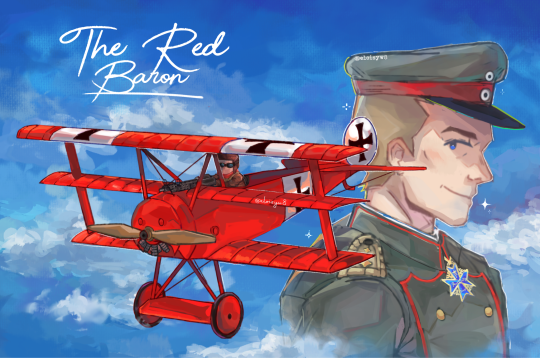
"The flying circus and a man from Prussia, The sky and a plane, this man commands his domain, The western front and all the way to Russia"
🔖| The Red Baron - Manfred von Richtofen
extra:

Heard somewhere eddie literally named his plane "blue baron" , he's definitely a fan
#the red baron#manfred von richthofen#ww1#ww1 history#cod zombies#cod cold war#cold war zombies#edward richtofen#call of duty black ops#wwi#supposedly just a sketch for art class but i got too engrossed into this#prussian history#german history#german empire#ww1 art#my art
106 notes
·
View notes
Text



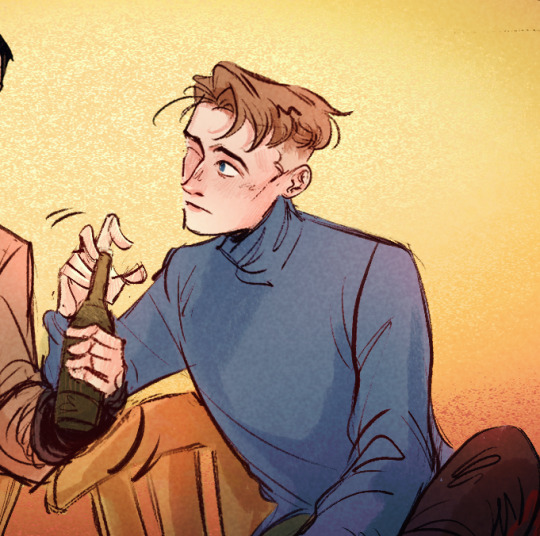
Martyrs of the Sky Chapter 3 — Part 3
82 notes
·
View notes
Text
Manfred at the funeral of Oswald Boelcke

72 notes
·
View notes
